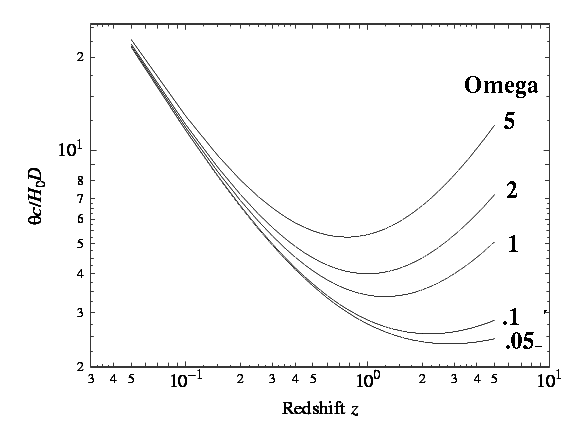
Okay, there's another test. Think of something that has
a fixed size -- a "standard rod". Look
at it at different redshifts and see how big it looks. Can you think
of one?
Is the Universe flat, positively curved, or negatively
curved -- the "k" in the Friedmann equation.
Think about the analogy of surface area on a ball or saddle...
- If the Universe is positively curved, it has less volume at high redshift than a flat universe does.
- If the Universe is negatively curved, it has more volume than a flat universe does.
Since there is more volume at high redshift in an negatively curved universe, and things at high redshift are faint (they are far away!), a negatively curved universe should have more faint galaxies than a positively curved one. Ooh -- there's a test!
So go out and count the number of things you see as a function of apparent magnitude and compare to models. It turns out there are LOTS of faint things -- a negatively curved universe? Actually there are TOO MANY faint things -- no cosmology fits it! What went wrong? Galaxy evolution: galaxies had younger, brighter stars back then, and probably were smaller, so the intrinsic brightness of galaxies is different, which screws up the model predictions.
The predicted differences in the numbers of faint galaxies (between different cosmologies) is much smaller than the predicted scatter due to galaxy evolution. This test no longer used much in cosmology...
The apparent size of objects changes as a function of redshift in different cosmologies, and actually increases at high redshift! (Think of lines of longitude on a sphere...)Note that even if the Universe is flat, angular size increases at high z -- the Universe is acting sort of like a gravitational lens... Okay, there's another test. Think of something that has a fixed size -- a "standard rod". Look at it at different redshifts and see how big it looks. Can you think of one?
The apparent brightness of objects as a function of redshift changes under different cosmologies. This is called a redshift-distance test, since the apparent brightness tells you the distance (if you know the absolute magnitude). But you actually don't need to know the absolute magnitude for the test to work -- it's a differential test.So here's yet another test. Think of something that has a fixed luminosity -- a "standard candle". Look at it at different redshifts and see how bright it looks. Traditionally this has been done with brightest cluster galaxies, and has given terrible results. Why?
Because of galaxy evolution, this test, too, had been largely abandoned.Until....